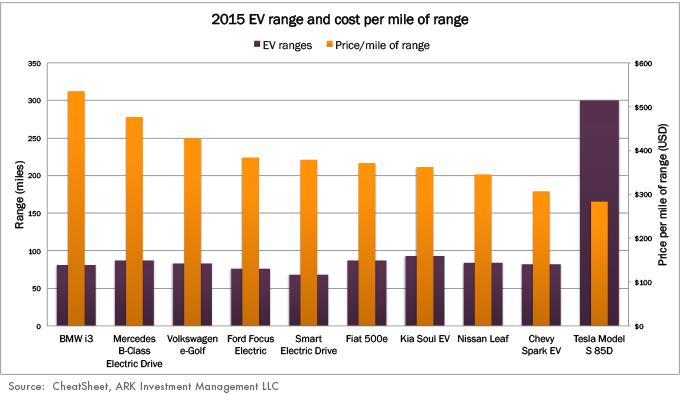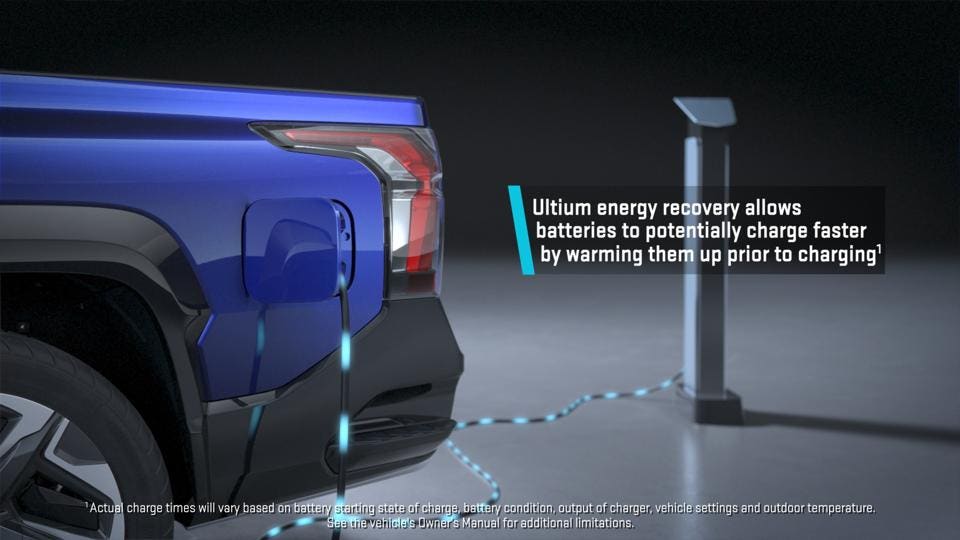Battery range improvements enhance electric vehicle performance and user convenience. Advancements in technology extend driving distances and reduce charging times.
Battery range improvements have become a focal point in the electric vehicle (EV) industry. These advancements not only extend the driving distance of EVs but also significantly reduce charging times, making electric cars more practical for daily use. Innovations such as higher energy density batteries, improved thermal management systems, and efficient regenerative braking contribute to these enhancements.
Manufacturers are investing heavily in research and development to push the boundaries of what battery technology can achieve. As a result, modern electric vehicles are becoming more attractive to consumers, offering longer ranges and quicker charging, thus addressing some of the primary concerns associated with electric vehicle adoption.
Introduction To Battery Range
Battery range refers to the distance a device can travel on a single charge. This is critical for electric vehicles, smartphones, and other gadgets. Improving battery range can enhance user experience and device efficiency. Let’s explore the key aspects of battery range improvements.
Current Challenges
The main challenge is limited battery life. Most batteries can only last a few hours or days. Users need to charge their devices frequently, which is inconvenient. Another challenge is slow charging speeds. It can take hours to fully charge a device. Battery degradation is also a problem. Over time, batteries lose their ability to hold a charge. Environmental concerns arise from the disposal of old batteries. These issues highlight the need for better battery technology.
Importance Of Improvement
Improving battery range can lead to longer device usage. This means fewer interruptions for users. Enhanced battery life can also reduce the frequency of charging. This saves time and increases convenience. Faster charging speeds can make devices more efficient.
Reduced battery degradation extends the lifespan of devices. This is both cost-effective and environmentally friendly. Lastly, better battery technology supports innovation. It allows for the development of more advanced and efficient devices.
| Challenge | Impact |
|---|---|
| Limited Battery Life | Frequent charging needed |
| Slow Charging Speeds | Long wait times for full charge |
| Battery Degradation | Reduced lifespan of devices |
| Environmental Concerns | Issues with battery disposal |

Credit: www.researchgate.net
Innovative Battery Technologies
Innovative battery technologies are transforming the way we use energy. These advancements promise longer ranges, faster charging, and enhanced safety. Let’s dive into two groundbreaking technologies that are shaping the future of batteries: Solid-State Batteries and Lithium-Sulfur Batteries.
Solid-state Batteries
Solid-state batteries offer a significant improvement over traditional lithium-ion batteries. They use a solid electrolyte instead of a liquid one. This change makes them safer and more efficient. Here are some key benefits:
- Higher energy density: They can store more energy in a smaller space.
- Improved safety: Reduced risk of leaks and fires.
- Longer lifespan: They last much longer than traditional batteries.
Solid-state batteries are still in development. Companies are working hard to make them commercially viable. Once available, they could revolutionize electric vehicles (EVs) and portable electronics.
Lithium-sulfur Batteries
Lithium-sulfur batteries are another exciting innovation. They promise to deliver higher performance at a lower cost. Here are some of their standout features:
- Higher energy capacity: They can hold more charge than lithium-ion batteries.
- Eco-friendly: Sulfur is abundant and less harmful to the environment.
- Lightweight: These batteries are lighter, making them ideal for drones and EVs.
Despite their potential, lithium-sulfur batteries face challenges. They need better stability and longer lifespans. Researchers are making progress, and these batteries could soon hit the market.
| Battery Type | Advantages | Challenges |
|---|---|---|
| Solid-State | Higher energy density, improved safety, longer lifespan | High production cost, scalability issues |
| Lithium-Sulfur | Higher energy capacity, eco-friendly, lightweight | Stability, lifespan |
Both solid-state and lithium-sulfur batteries hold promise. They could power our future devices and vehicles more efficiently. Keep an eye on these technologies as they continue to evolve.
Advanced Energy Management Systems
Advanced Energy Management Systems are revolutionizing battery performance. These systems enhance battery range and efficiency. They intelligently manage energy flow and usage. This advanced technology ensures optimal performance in various conditions. Let’s dive into the key components of these systems.
Smart Charging Solutions
Smart Charging Solutions play a crucial role in energy management. They optimize charging speed and efficiency. This technology reduces charging time and extends battery life.
Here are some features of smart charging solutions:
- Adaptive Charging: Adjusts charging speed based on battery condition.
- Peak Shaving: Reduces charging during peak electricity demand.
- Dynamic Load Management: Balances charging across multiple devices.
These features make charging more efficient and sustainable. Users experience less downtime and longer battery life.
Thermal Management
Effective Thermal Management is vital for battery performance. It ensures batteries operate within a safe temperature range. This prevents overheating and prolongs battery lifespan.
Key components of thermal management include:
- Cooling Systems: Use fans or liquid to cool batteries.
- Insulation Materials: Prevent heat loss and maintain temperature.
- Heat Sinks: Absorb and dissipate excess heat.
These components keep batteries at optimal temperatures. They enhance safety and efficiency.
| Feature | Benefit |
|---|---|
| Adaptive Charging | Extends battery life |
| Cooling Systems | Prevents overheating |
In summary, Advanced Energy Management Systems significantly improve battery range. Smart Charging Solutions and Thermal Management are key components. They ensure batteries are efficient, safe, and long-lasting.

Credit: seekingalpha.com
Lightweight Materials
Lightweight materials play a crucial role in enhancing battery range. By reducing the vehicle’s overall weight, these materials help improve efficiency. This section explores two popular lightweight materials: carbon fiber components and aluminum alloys.
Carbon Fiber Components
Carbon fiber is known for its strength and low weight. These features make it ideal for electric vehicles (EVs). Using carbon fiber can significantly reduce a car’s weight. This reduction leads to better performance and increased battery range.
Carbon fiber components are also very durable. They resist wear and tear, ensuring a longer lifespan. This durability makes them a cost-effective choice over time. Even though carbon fiber can be expensive, its benefits justify the cost.
Here are some key benefits of carbon fiber:
- High strength-to-weight ratio
- Excellent durability
- Corrosion resistance
- Enhanced battery efficiency
Aluminum Alloys
Aluminum alloys are another excellent choice for lightweight materials. They offer a good balance of strength and weight. Many automakers use aluminum alloys to build car bodies and frames. This use helps in reducing the vehicle’s weight.
Aluminum alloys are also highly resistant to corrosion. This resistance ensures that the vehicle remains in good condition for years. The lightweight nature of aluminum alloys helps increase the vehicle’s battery range.
Here are some key benefits of aluminum alloys:
- Good strength-to-weight ratio
- Corrosion resistance
- Cost-effective
- Improved battery range
Both carbon fiber components and aluminum alloys play a vital role. They help in enhancing the battery range of electric vehicles by keeping them light and efficient.
Aerodynamic Design Enhancements
Battery range improvements are transforming the electric vehicle (EV) industry. One major factor is aerodynamic design enhancements. These changes help reduce drag and increase efficiency. Below, we explore specific areas of improvement.
Streamlined Body Shapes
EVs now feature sleeker, streamlined body shapes. This design reduces air resistance. Reduced drag means the battery lasts longer.
Engineers use computer models to perfect these shapes. Wind tunnel testing also helps refine the designs. The result is a car that cuts through the air smoothly.
Some key features of streamlined designs include:
- Curved edges
- Lower ride height
- Smoothed underbodies
Active Aerodynamics
Active aerodynamics take design a step further. These features adjust based on driving conditions. For example, active grille shutters close at high speeds. This reduces drag and improves battery range.
Other active features include:
- Adjustable spoilers
- Retractable door handles
- Variable air intakes
These dynamic components optimize performance. They work automatically, ensuring efficiency without driver input.
In summary, aerodynamic design enhancements play a critical role. They help extend the battery range of modern electric vehicles.
Regenerative Braking Systems
Regenerative braking systems are transforming battery range improvements. These systems capture and reuse energy during braking. This technology extends the driving range of electric vehicles (EVs). Let’s explore how regenerative braking systems achieve this.
Energy Recapture
Regenerative braking systems recapture energy during braking. This energy would otherwise be lost as heat. The system converts kinetic energy into electrical energy. This electrical energy is stored in the vehicle’s battery.
Here’s how it works:
- The driver applies the brakes.
- The regenerative system activates.
- Kinetic energy converts to electrical energy.
- The energy stores in the battery.
This process helps to recharge the battery. It increases the overall efficiency of EVs. More energy recapture means more extended driving ranges.
Efficiency Gains
Efficiency gains are a significant benefit of regenerative braking systems. These gains come from the energy recapture process. More efficient energy use leads to fewer charging stops.
Consider these efficiency gains:
| Aspect | Benefit |
|---|---|
| Energy Recapture | Increases battery range |
| Reduced Wear | Less brake pad wear |
| Lower Emissions | Environmental benefits |
These efficiency gains make EVs more practical. They also make EVs more eco-friendly. This technology represents a significant step forward in sustainable transportation.
Software Optimization
Software optimization can greatly enhance battery range in electric vehicles. It involves improving how the battery and the vehicle’s software work together. This can lead to significant gains in battery life and efficiency.
Route Planning Algorithms
Route planning algorithms help in choosing the most efficient path for travel. These algorithms take into account various factors like traffic, road conditions, and elevation.
- Reduces unnecessary stops and starts
- Minimizes energy consumption
- Optimizes travel time
Better route planning can save a lot of energy. For example, an algorithm can suggest a route with fewer hills. This helps the battery last longer.
| Factor | Impact on Battery |
|---|---|
| Traffic | High traffic increases energy use |
| Road Conditions | Bad roads require more energy |
| Elevation | Hills consume more battery power |
Battery Health Monitoring
Battery health monitoring ensures the battery stays in good condition. This involves tracking various parameters of the battery.
- Temperature
- Charge cycles
- Voltage levels
By monitoring these factors, the software can take steps to prevent battery degradation. It can adjust the charging rate or suggest optimal times to charge the battery.
Battery health monitoring can extend the life of the battery. It ensures the battery remains efficient and reliable for a longer period.

Credit: www.notateslaapp.com
Future Trends
The future of battery range improvements holds exciting possibilities. As technology advances, we see significant changes in how batteries work and how they integrate with other systems. These advancements promise to make our lives easier and our devices more powerful.
Next-generation Batteries
Next-generation batteries are set to revolutionize energy storage. These batteries use new materials that store energy more efficiently. Solid-state batteries are a prime example. They replace the liquid electrolyte with a solid, which makes them safer and more durable.
Another innovation is lithium-sulfur batteries. They can store more energy than traditional lithium-ion batteries. This means devices can run longer on a single charge. Graphene batteries are also emerging. They charge faster and have a longer lifespan.
Integration With Renewable Energy
Integrating batteries with renewable energy sources is a key trend. This integration helps in storing energy from sources like solar and wind. Home battery systems can store excess solar power generated during the day. This stored power can be used at night, reducing reliance on the grid.
Electric vehicles (EVs) are also benefiting from this trend. EVs can charge using solar power, making them more eco-friendly. Smart grids are being developed to manage energy more efficiently. They distribute stored renewable energy where it’s needed most.
| Battery Type | Key Benefits |
|---|---|
| Solid-State Batteries | Safer, More Durable |
| Lithium-Sulfur Batteries | Higher Energy Storage |
| Graphene Batteries | Faster Charging, Longer Lifespan |
The future of battery technology is bright. These advancements will make our lives better and help the planet.
Frequently Asked Questions
Is Ev Battery Range Improving?
Yes, EV battery range is improving. Advances in battery technology and increased efficiency are extending the range of electric vehicles. New models offer longer distances per charge, making EVs more practical for everyday use.
Will Ev Ever Have 500 Mile Range?
Yes, EVs are expected to achieve a 500-mile range soon. Advances in battery technology and efficiency are rapidly progressing. Models like the Tesla Cybertruck and Lucid Air already aim for this milestone. The future of long-range EVs looks promising.
What Will Ev Range Be In 5 Years?
EV range will likely exceed 300 miles per charge in 5 years. Rapid advancements in battery technology and infrastructure improvements will drive this increase.
How Do I Maximize My Ev Battery Range?
To maximize EV battery range, drive at moderate speeds and avoid rapid acceleration. Use regenerative braking. Keep tires properly inflated. Minimize use of air conditioning and heating. Plan efficient routes.
Conclusion
Battery range improvements are revolutionizing how we view electric vehicles. Enhanced technology means longer drives and fewer charges. Manufacturers are focusing on efficiency and sustainability. As advancements continue, electric vehicles become more practical for everyday use. Stay updated with the latest innovations to enjoy a greener, more efficient future.
